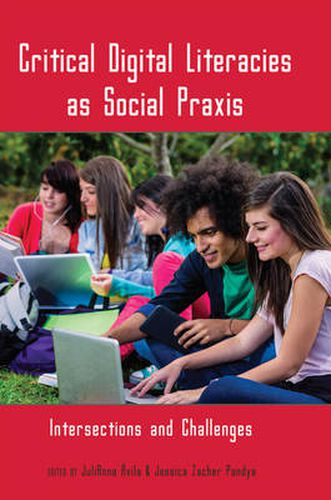Readings Newsletter
Become a Readings Member to make your shopping experience even easier.
Sign in or sign up for free!
You’re not far away from qualifying for FREE standard shipping within Australia
You’ve qualified for FREE standard shipping within Australia
The cart is loading…






This book won the Literacy Research Association’s 2014 Edward B. Fry Book Award
The contributors to this edited volume examine the simultaneous implementation of critical and digital literacies and explore ramifications for the development and assessment of critical digital literacies (CDL) curricula across educational contexts. We ask: How has the increasing ubiquity of digital literacies in and out of school affected our definitions of critical literacies? And how have our ever-changing perceptions of critical literacies affected how we define, teach, and engage in digital literacies? We believe that there is crucial work to be done at these intersections, work that builds upon the extensive bodies of critical and digital literacies research. Some issues and questions that chapters address are:
What is negotiated, gained, or lost in the process of combining the critical and the digital?
Where is the power located - and who is silenced, and how - in CDL approaches?
Can CDL practices disrupt classroom routines in constructive and engaging ways?
How has the divide between audience and participant, and the notion of collective intelligence, been challenged and redefined by CDL?
How do CDL practices impact youths’ identity constructions?
The essays in this volume present a balance between current issues and promising future opportunities and directions.
$9.00 standard shipping within Australia
FREE standard shipping within Australia for orders over $100.00
Express & International shipping calculated at checkout
This book won the Literacy Research Association’s 2014 Edward B. Fry Book Award
The contributors to this edited volume examine the simultaneous implementation of critical and digital literacies and explore ramifications for the development and assessment of critical digital literacies (CDL) curricula across educational contexts. We ask: How has the increasing ubiquity of digital literacies in and out of school affected our definitions of critical literacies? And how have our ever-changing perceptions of critical literacies affected how we define, teach, and engage in digital literacies? We believe that there is crucial work to be done at these intersections, work that builds upon the extensive bodies of critical and digital literacies research. Some issues and questions that chapters address are:
What is negotiated, gained, or lost in the process of combining the critical and the digital?
Where is the power located - and who is silenced, and how - in CDL approaches?
Can CDL practices disrupt classroom routines in constructive and engaging ways?
How has the divide between audience and participant, and the notion of collective intelligence, been challenged and redefined by CDL?
How do CDL practices impact youths’ identity constructions?
The essays in this volume present a balance between current issues and promising future opportunities and directions.